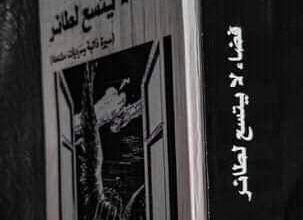“Sharar,” My Birthplace…!

Yemeni mp
Ahmed Saif Hashed
Our village, like many others, is nestled in a valley known as “Sharar,” situated within the district of Al-Qabeta, which once encompassed a larger area than it does today.
Al-Hujariah is an administrative unit under Taiz Governorate, extending into regions we were unaware of.
Our surroundings displayed a variety of dialects and melodies, perhaps due to their isolation, limited communication, and other circumstances that need not be explored here.
During my childhood, the villages in Sharar were perpetually grappling with poverty. Our daily sustenance consisted of dry bread with tea and, occasionally, milk.
The staple meals of “Aseed,” a simple mixture of flour and water cooked over heat, and “wazif,” small dry fish that provided essential protein, became our mainstay. Despite suffering from malnutrition, these humble meals likely kept us alive.
“Wazif” offered significant nutritional value that none could deny, except those who were ungrateful. Many owe their survival to it.
Sharar can be seen as either a valley or a weary settlement along the banks of a ravaged stream, with houses scattered across the mountain slopes.
Our ancestors primarily built their homes on the ridges, perhaps seeking safety that was otherwise elusive, while some settled closer to the valley’s edge.
In Sharar, we relied on rain-fed terraces, as the area lacks streams or rivers and occasionally faces drought. Our terraces have often been let down by rain during many seasons, sometimes enduring repeated disappointments.
When the rains fail in Sharar, people are forced to gather money from their meager resources to pay for the “rain collector.
” The seasons have frequently disappointed Sharar, and misfortune has turned against it. Luck has betrayed it numerous times, renewing its woes and causing hope to fade.
In desperation, it has sought the assistance of “Namaa” rain from Mount Namaa in Ibb Governorate.
Perhaps Sharar is a wretched valley, much like its inhabitants, searching for glory amid sorrow, politics, and ruin—filled with poverty and a spirit of rebellion. It is like the east longing for dawn, yet that dawn remains elusive or out of reach.
I often wonder why the valley is named “Sharar.” Is it derived from the whisper of the valley, the spark of fire, or from a fate steeped in misery?
There is a tale that describes it as unfortunate yet content. How I relate to “Sharar”!
The story goes that when God divided the orchards and gardens among the valleys, He asked “Sharar” if it desired a garden or an orchard. It replied with resignation: “If I get more, fine; if not, I don’t want it.
” Thus, God did not grant Sharar a garden or an orchard, explaining why its luck is steeped in drought and barrenness.
Sharar has long suffered from deprivation and the absence of a significant garden or orchard, compounding its trials and disappointments.
Yet perhaps it is not all dire; when it rains, the valley greens and flourishes.
Some see Sharar, the contented one, as having betrayed our hopes even before our arrival, yet it remains content to this day.
We are still haunted by the curse of its contentment, a love we cannot abandon, even as hunger gnaws at us and our bones ache.
We, like Sharar, embody simplicity and self-reliance.
We continue to take pride in our contentment, which has not abandoned us.
We cling to the saying, “Contentment is a treasure that never fades.” Contentment endures. “Sharar” is a valley and a collection of villages—my birthplace, which I can no longer bear or help lighten its burdens. “Sharar” resembles me, or I resemble it, or perhaps it is a bit of both.
* * *






